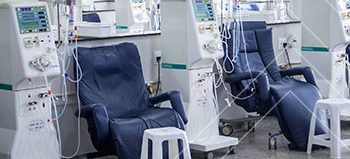The global radiotherapy market is projected to register a CAGR of 6.8% from 2017 to 2022. Geographically, this market has been segmented into North America, Europe, Asia-Pacific, and the Rest of the World (RoW).
The radiotherapy market is currently witnessing a rise in the use of proton beam therapy systems. A rise in the adoption of this mode of therapy is adding growth opportunities for market players. For instance, as of January 2017, there were 56 facilities offering the pencil-beam therapy, 39 facilities are under construction, and a further 18 facilities are planned to be constructed in the coming years, with the majority of these are located in the U.S., Japan, China, and Europe. (Source: Health Policy Advisory Committee on Technology)
The global radiotherapy market is segmented on the basis of type, product type, application, end user, and region. Based on application, the market is segmented into external beam therapy and internal beam therapy. In 2016, the external beam radiotherapy segment dominated the market. The larger share of this segment is majorly attributed to the increasing adoption of external radiotherapy procedures and advancements in external beam radiation therapy. In addition, since this procedure does not have associated risks of high radiation exposure to patients, its demand is higher among both patients as well as healthcare providers.
Download PDF Brochure : http://www.marketsandmarkets.com/pdfdownload.asp?id=567
The global radiotherapy market, by end user, is segmented into hospitals, ambulatory & radiotherapy centers, and cancer research institutes. The hospitals segment commanded the largest share of the global radiotherapy market in 2016. The large share of this segment can be attributed to factors such as increasing installations of advanced radiotherapy equipment in developed as well as developing regions, increasing government initiatives, and rising incidence of cancer.
In 2016, the Asia-Pacific region is expected to register the highest CAGR during the forecast period. The high growth in this segment can be attributed to the growing number of new cancer cases, improvements in healthcare facilities, growing medical tourism, and focus of global players on the emerging nations in Asia-Pacific such as China and India.
In addition, emerging markets are expected to offer significant growth opportunities for market players owing to the rising number of agreements, partnerships, and the development of training centers in these emerging countries. For instance, In December 2015, Varian Medical Systems, a manufacturer of radiotherapy devices, partnered with Apollo Hospitals Group, one of the largest hospital chains in India, to develop an educational program to train radiation therapists in the country. In 2015, Accuray Incorporated established new training centers for its TomoTherapy and CyberKnife systems in China, in collaboration with leading cancer hospitals.


